Disclosure: This article contains affiliate links. We may earn a commission from purchases at no extra cost to you, which helps our travel content.
Let me tell you something about the fashion world – we're obsessed with finding diamonds in the rough. Whether it's uncovering an emerging designer or spotting the next big trend before it hits mainstream, there's nothing like that rush of discovery. That same thrill is what drew me to the Kalahari Desert in Botswana last fall – a vast, untamed landscape where actual diamonds are found, but the real treasures are the raw, unfiltered experiences that don't require a luxury budget. Between sourcing trips to Cape Town and Johannesburg, I carved out two weeks to explore this magnificent desert on a shoestring budget. The result? One of the most authentic and transformative adventures of my life that cost less than a single designer handbag. So grab your notebooks (or your Notes app) because I'm about to break down exactly how you and your crew can experience the magic of the Kalahari without emptying your bank accounts.
Planning Your Budget Kalahari Adventure
When I tell my fashion industry colleagues I spent two weeks in the Kalahari for less than what most people drop during a weekend at New York Fashion Week, they're genuinely shocked. The key is strategic planning and timing.
First, fall (September to November) is your sweet spot for the Kalahari. It's shoulder season, meaning fewer tourists, more wildlife sightings as animals gather around dwindling water sources, and significantly reduced rates at camps and lodges. I scored a 30% discount at most accommodations simply by traveling in October rather than during the peak July-August period.
Second, don't book through luxury travel agencies that cater to the fashion elite (sorry, industry friends). Instead, go direct or use local Botswanan operators. I connected with Safari Specialists, a Maun-based company that arranged my entire itinerary at native rates rather than inflated international prices.
Third, consider a mixed accommodation approach. I spent 4 nights in budget lodges, 6 nights camping, and splurged on just 3 nights at a mid-range tented camp for the full safari experience. This blend gave me the authentic Kalahari experience while keeping costs manageable.
Before booking anything, invest in a comprehensive travel guide that focuses specifically on Botswana. The detailed maps and campsite information saved me countless hours of research and helped identify under-the-radar spots that weren't charging premium prices.
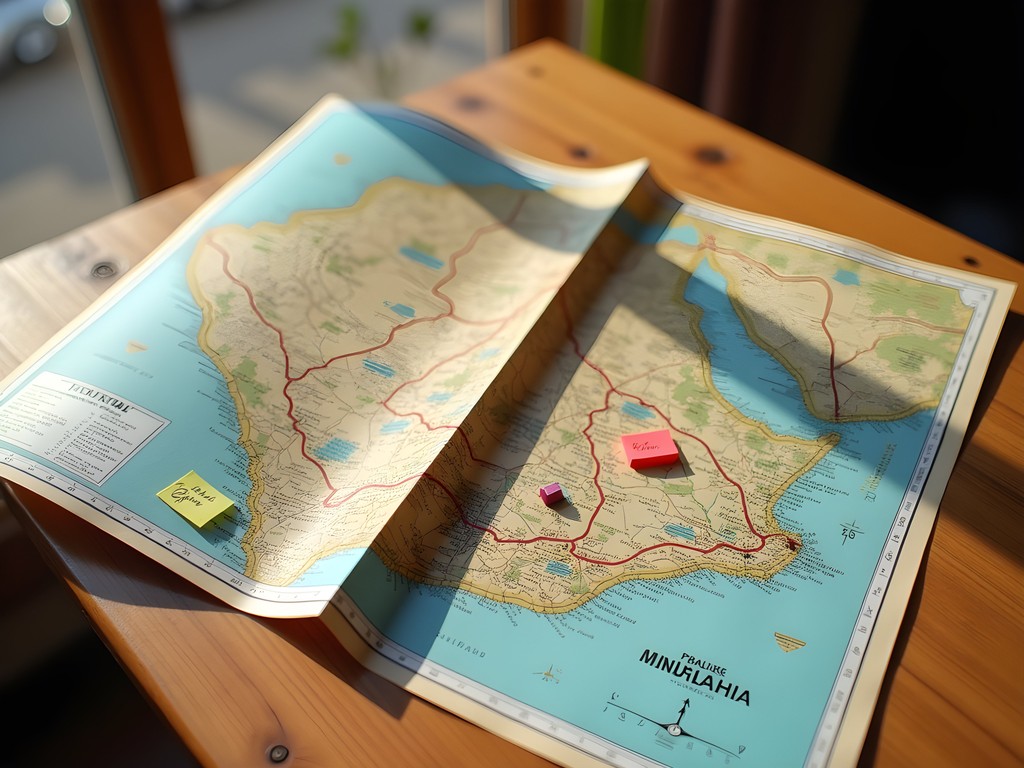
💡 Pro Tips
- Book at least 6 months in advance for the best deals
- Travel in October for ideal wildlife viewing with lower prices
- Mix camping with occasional lodge stays to balance comfort and budget
Transportation Hacks That Saved Me Thousands
Here's where my retail buyer expertise came in handy – negotiation and logistics optimization are literally my day job. When sourcing fabric or finalizing production runs, I'm always looking for the most efficient route that doesn't sacrifice quality. The same principles apply to Kalahari transportation.
Flying into Maun (Botswana's safari hub) can be pricey, but I found a workaround. I flew into Johannesburg, South Africa (where international flights are much cheaper), then caught a budget airline to Gaborone, Botswana's capital. From there, I took a scenic 5-hour bus ride to Maun for about $15. This transportation stack saved me nearly $400 compared to direct routes.
For getting around the Kalahari itself, the conventional wisdom says you need to either join an expensive guided safari or rent a 4x4 at exorbitant rates. Instead, I connected with three other travelers via a Botswana backpackers Facebook group, and we split a 4x4 rental four ways. Our Toyota Land Cruiser rental came to just $25 per person per day – a fraction of the $150+ daily rate for guided tours.
The real game-changer, though, was downloading offline maps. I used Tracks4Africa which has detailed Kalahari routes including the smallest dirt tracks and waterholes not shown on Google Maps. This allowed us to self-drive safely without paying premium prices for guides (though we did hire local guides for specific day trips when required by park regulations).
One cautionary note: fuel in remote areas can cost up to 50% more than in cities, so fill up in Maun and carry extra fuel cans for extended Kalahari exploration. Our group underestimated this initially and had to adjust our route when prices jumped at the remote stations.
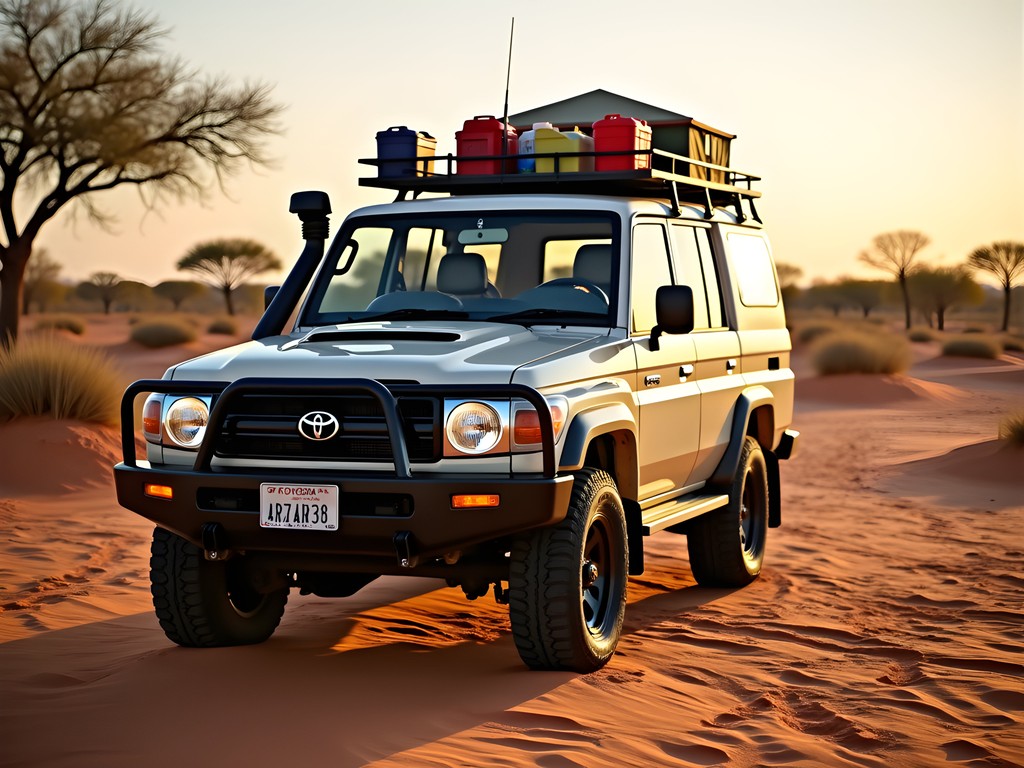
💡 Pro Tips
- Split vehicle rental costs with other travelers to quarter your expenses
- Take the bus-flight combo from Johannesburg instead of direct flights to Maun
- Download offline maps before departure – cell service is non-existent in most of the Kalahari
Affordable Accommodations: From Tents to Hidden Gems
In fashion buying, I've learned that sometimes the most authentic pieces aren't found in glossy showrooms but in tucked-away ateliers. The Kalahari's accommodation scene works similarly – the most authentic experiences often come from the least flashy options.
Let's start with camping, which will be your budget backbone. The Central Kalahari Game Reserve has basic public campsites for around $5-10 per person per night. They're no-frills (just a designated spot with a fire pit and basic toilet facilities), but the experience of sleeping under the Kalahari's blanket of stars is genuinely priceless. I invested in a quality sleeping bag before the trip – essential as desert temperatures drop dramatically at night even in fall.
For a step up in comfort without breaking the bank, community-run campsites near the Okavango Delta's southern edges offer hot showers and basic kitchen facilities for around $15-20 per person. My favorite was Kaziikini Community Camp, run by local San people who also offer affordable guided walks where you'll learn about traditional survival skills and plant medicine.
When you need a proper bed and shower (trust me, you will after several days of camping), look for government-run lodges rather than private reserves. The Botswana Wildlife Training Institute in Maun offers clean rooms with private bathrooms for about $40-50 per night – a fraction of the $300+ at safari lodges. They're not luxurious, but they're authentic, and your money directly supports wildlife conservation education.
My one calculated splurge was three nights at Kalahari Plains Camp in the Central Kalahari Game Reserve. At $180 per night during shoulder season, it wasn't cheap, but it was 60% less than high season rates for the same experience. Those three nights of proper beds, excellent guides, and inclusive game drives recharged our batteries for the more rugged camping that followed.

💡 Pro Tips
- Book community-run campsites instead of private concessions
- Pack a high-quality sleeping bag – desert nights get surprisingly cold
- Schedule your 'splurge' accommodations strategically when you'll need to recharge
Wildlife Viewing Without the Premium Price Tag
The whole point of visiting the Kalahari is to experience its incredible wildlife, and there's a common misconception that you need to pay premium prices for premium sightings. After two weeks of budget exploration, I can confidently say that's completely false.
The key difference between budget and luxury wildlife viewing isn't the animals you'll see – it's the exclusivity and amenities. Self-driving through Central Kalahari Game Reserve, we spotted black-maned lions, cheetahs, gemsbok, and massive elephant herds – exactly the same wildlife people were paying $500+ per day to see from luxury lodges.
To maximize wildlife sightings on a budget:
-
Focus on waterholes: Animals must drink, especially during fall when water sources are limited. We'd arrive at waterholes around 7am or 4pm and simply wait – the wildlife came to us. Patience costs nothing but delivers incredible results.
-
Hire local guides for day trips: While self-driving is generally fine, spending $50 for a local guide for one strategic day in each new area pays dividends. These guides know exactly where animals were spotted that morning and can dramatically increase your sighting success rate.
-
Invest in decent optics: You don't need the $2,000 binoculars safari guides use, but a good pair of binoculars will transform your experience. I spotted a leopard in a distant tree that other budget travelers completely missed because they lacked proper optics.
One of our most memorable wildlife experiences cost exactly zero dollars: we parked at Deception Valley (a famous Kalahari landmark) one evening, made dinner at our campsite, and watched as a family of bat-eared foxes emerged from their den just 50 feet away. They played and hunted for insects while we silently observed – a private wildlife show that luxury travelers would have paid hundreds to experience.
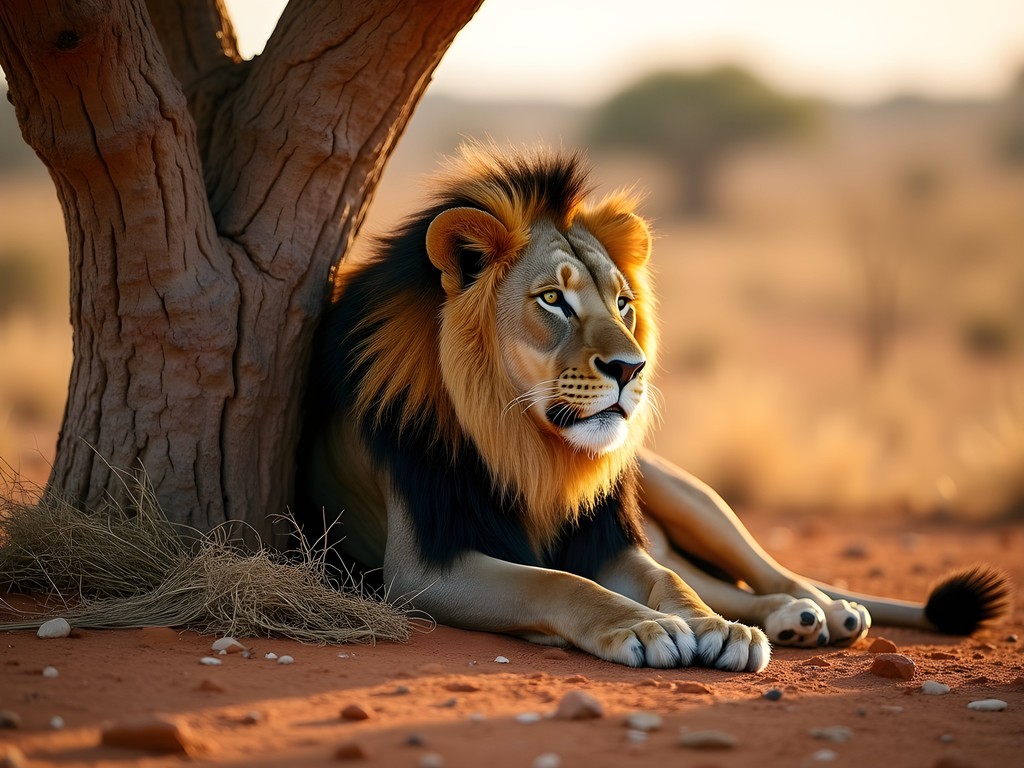
💡 Pro Tips
- Visit waterholes during early morning or late afternoon
- Hire local guides for just one strategic day in each region
- Always scan distant trees for leopards – they're there but easily missed
Eating Well Without Breaking the Bank
Food in remote Kalahari locations can be extraordinarily expensive if you're not strategic. When I'm sourcing textiles internationally, I always look for ways to maintain quality while reducing costs – the same approach works perfectly for safari meals.
The standard advice to stock up on supplies in Maun before heading into the desert is absolutely correct. Prices can be 3-4 times higher at remote shops, if they exist at all. We loaded up at the Spar supermarket in Maun, focusing on versatile ingredients that wouldn't spoil quickly in the heat.
Our daily food budget averaged about $12 per person – comparable to what you'd spend at home, not inflated tourist prices. The secret was simple meal planning with minimal waste. We created a rotating menu of hearty one-pot meals that could be cooked over a campfire: curry with rice, pasta with shelf-stable sauce, and bean-based stews. For breakfast, instant oatmeal with dried fruit and nuts provided lasting energy.
Investing in a good cooler was crucial – it kept our perishables (cheese, vegetables, and a few meats) fresh for days between ice restocks. We'd refresh ice whenever we passed through a town with facilities, roughly every 3-4 days.
We also embraced local foods when possible. In villages near the Central Kalahari Game Reserve, we purchased fresh bread baked by local women for pennies compared to packaged bread. At a small market near Ghanzi, we bought biltong (South African dried meat) that became our go-to protein-rich snack during game drives.
For cooking equipment, we kept it minimal: one good pot, one pan, a portable stove for when campfires weren't practical, and basic utensils. This setup handled everything from morning coffee to evening stews without unnecessary weight or complexity.
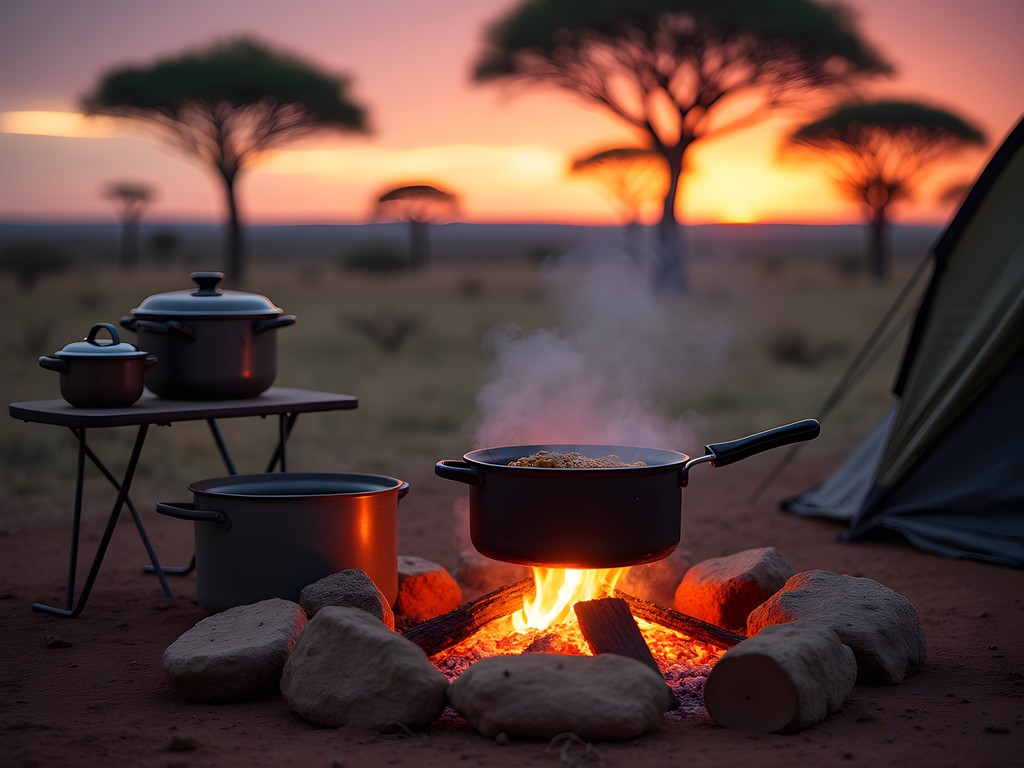
💡 Pro Tips
- Create a meal plan before shopping to minimize waste and overspending
- Buy fresh bread and produce from local villages when possible
- Invest in a quality cooler – it pays for itself by preserving perishables longer
Cultural Experiences That Don't Cost a Fortune
The Kalahari isn't just about wildlife – it's home to some of the world's oldest cultures, particularly the San people (sometimes called Bushmen) who have thrived in this harsh environment for thousands of years. Many luxury tours include sanitized cultural experiences at premium prices, but I found more authentic and affordable alternatives.
In the fashion world, we value artisans who maintain traditional techniques while adapting to contemporary contexts. The same respect should apply to indigenous cultures. Rather than visiting commercial cultural villages designed for tourists, we connected with community tourism initiatives where proceeds directly benefit local people.
The Dqae Qare San Lodge near Ghanzi offers cultural experiences led by San community members for about $25 per person – a fraction of what luxury lodges charge. We joined a morning bush walk where our guide, Xukuri, demonstrated traditional hunting techniques, identified medicinal plants, and showed us how to find water in the seemingly barren landscape. The knowledge was identical to what luxury tourists receive, but without the markup.
In the Central Kalahari, we visited D'kar, a San community known for its art cooperative. Here, artists create intricate works inspired by traditional San rock art but using contemporary materials. I purchased several small pieces directly from the artists for $10-30 each – unique souvenirs that support local creativity while costing less than mass-produced airport gifts.
One of our most memorable experiences was completely free. While camping near Xade, we met a local family who invited us to join their evening gathering. We contributed some tea and sugar from our supplies, and in return, they shared stories and even taught us a few words in their click language. That genuine cultural exchange was priceless – and it happened because we were traveling simply rather than being insulated in a luxury environment.
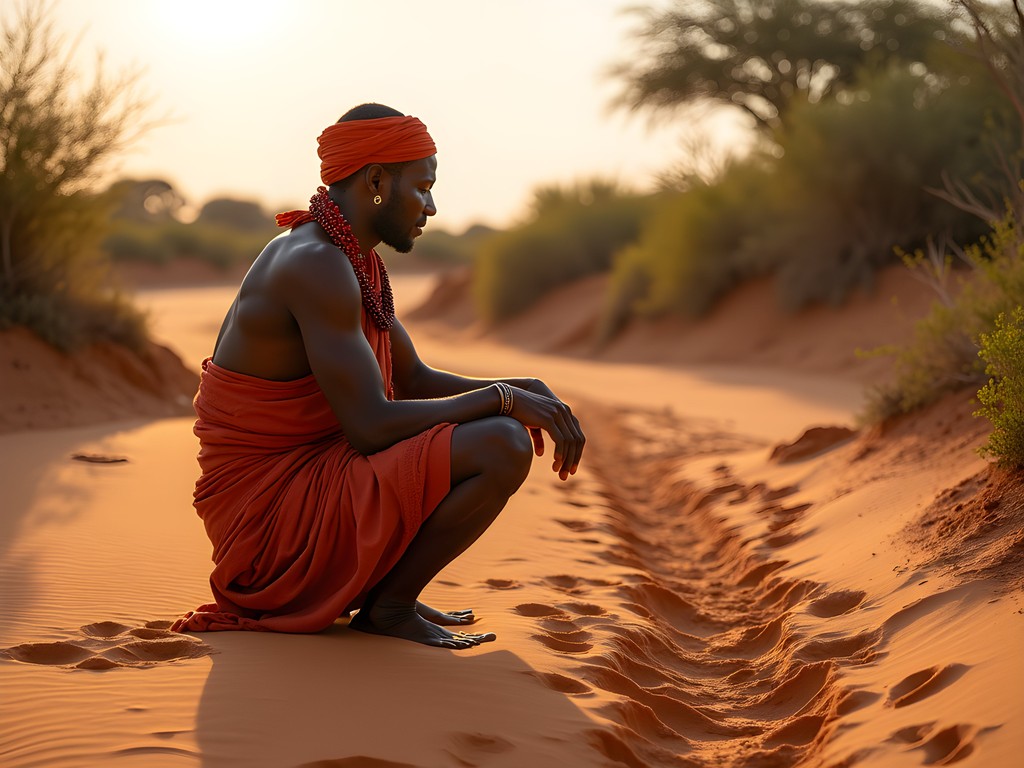
💡 Pro Tips
- Seek out community-based tourism initiatives rather than commercial cultural shows
- Learn a few basic greetings in local languages – it opens doors and shows respect
- Bring small gifts like tea or school supplies rather than money when visiting communities
Final Thoughts
As I flew out of Maun at the end of my two-week Kalahari adventure, I tallied up the expenses: approximately $1,200 all-in, including transportation, accommodation, food, activities, and even a few souvenirs. That's less than what many travelers spend on a single weekend at a luxury safari lodge. The Kalahari taught me that in travel – just like in fashion – the most authentic experiences often come without designer price tags. You don't need premium labels to have premium experiences. What you do need is careful planning, a willingness to step outside your comfort zone, and an understanding that luxury in the Kalahari isn't about thread counts or champagne sundowners – it's about the raw, unfiltered connection to one of our planet's most extraordinary landscapes. So gather your group, start planning, and discover how the magic of the Kalahari is absolutely within your financial reach. The red sands are waiting, and they don't care how much you paid to see them.
✨ Key Takeaways
- With proper planning, a complete Kalahari experience can cost under $1,200 for two weeks
- Fall (September-November) offers the perfect balance of wildlife viewing and reduced prices
- Community-based tourism provides more authentic experiences at lower prices than commercial operations
- Self-driving dramatically reduces costs while increasing freedom to explore at your own pace
📋 Practical Information
Best Time to Visit
September to November (fall)
Budget Estimate
$80-100 per day all-inclusive
Recommended Duration
10-14 days
Difficulty Level
Moderate To Challenging

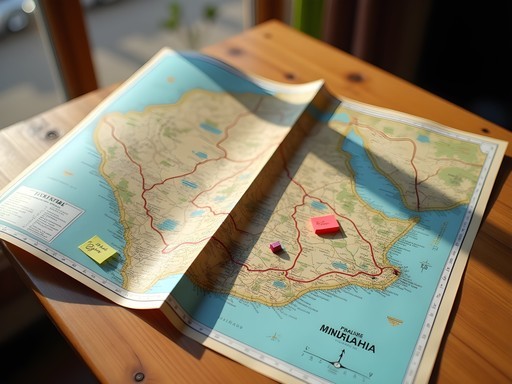
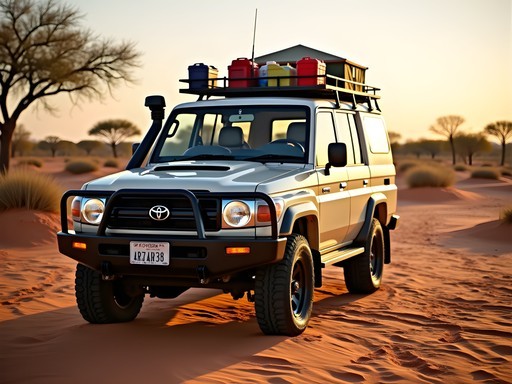
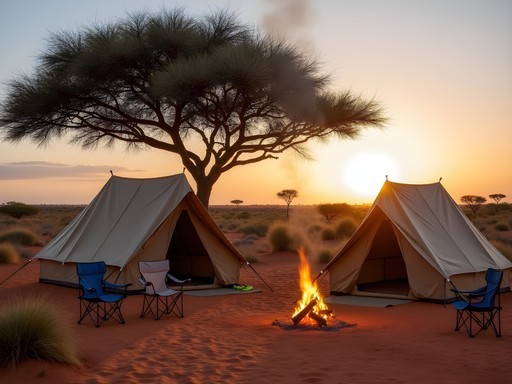
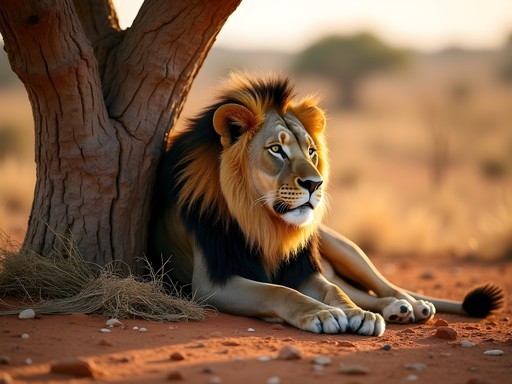

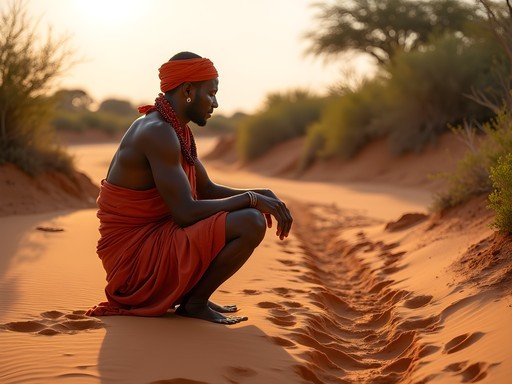




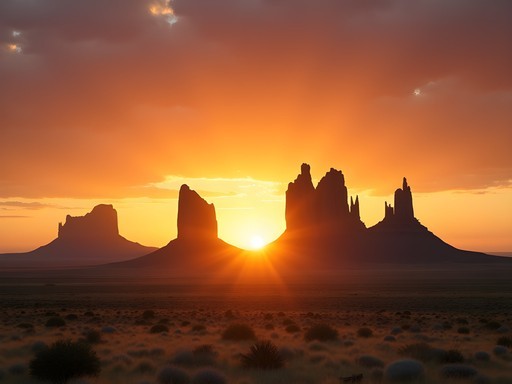
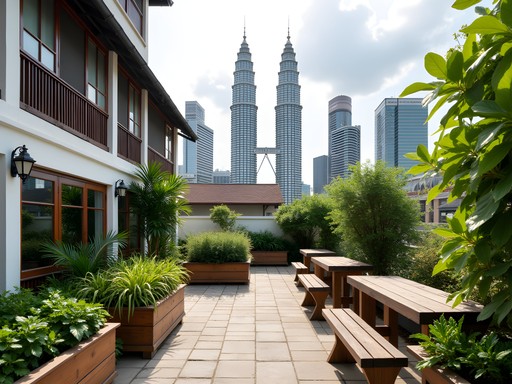

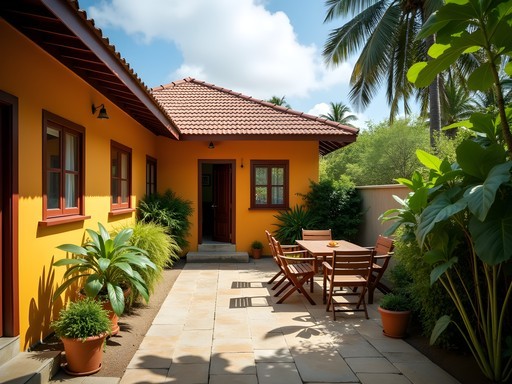


Comments
BudgetTrekker
$1200 for two weeks sounds amazing! Does that include flights?
Jose McDonald
That's just in-country expenses! International flights would be extra, but once you're there, you can definitely do it for that budget if you follow these tips.
SunsetChaser
Those sunset photos are INCREDIBLE! 😍
escapequeen
Just got back from doing the Kalahari on a budget last month! Your post is so accurate Jose! We stayed at Planet Baobab ($45/night for a traditional hut) and it was AMAZING value. The staff hooked us up with a local guide who took 4 of us on a full-day safari for about $60 each. We saw meerkats, giraffes and even a cheetah! One money-saving hack I'd add: we brought a water filter bottle which saved us tons on bottled water and worked perfectly with the local water sources. Definitely agree with your point about shoulder season - fewer tourists and the wildlife was still incredible.
WildlifeWanderer
Planet Baobab has been on my list! Did you do their pangolin conservation tour?
escapequeen
Yes! It was an extra $30 but totally worth it. We didn't see pangolins in the wild (they're super rare) but learned about their tracking program. The money goes to conservation too.
TravelBuddy456
Going to Botswana in November! How's the weather in the Kalahari then? Worth it?
Jose McDonald
November is the start of the rainy season - it's hot but you'll see lots of newborn animals and migrating birds. Just bring a good rain jacket and insect repellent!
Gregory Boyd
Jose, this is exactly the kind of practical budget safari guide I wish I'd had before my first Kalahari trip! Your transportation hacks section is spot on - I'd add that the combination of local buses from Gaborone to Maun saved me nearly $400 compared to private transfers. One tip for others: the Central Kalahari Game Reserve's public campsites are basic but incredibly well-positioned for wildlife viewing at dawn. I spent three nights at Piper Pan campsite for about $30/night and saw more bat-eared foxes and black-maned lions than folks staying at the luxury lodges. Did you find the morning game viewing better than evenings in September?
escapequeen
Did you feel safe in the public campsites? I'm thinking of going solo and wondering if I should splurge on a lodge instead.
Gregory Boyd
I felt perfectly safe, but I wasn't solo. If you're going alone, consider joining one of the budget group safaris Jose mentions - you'll get safety in numbers without the premium price. The Kalahari Mobile Safari operators often have last-minute deals for around $100/day all-inclusive.
escapequeen
Thanks! That sounds like a great middle ground. Will check out those operators.
mountainbuddy
Thanks for sharing! Never thought Botswana could be done on this budget.
luckystar
Going there next month! Did you have trouble with mosquitoes in the camping areas?
Jose McDonald
The Kalahari is actually pretty dry so mosquitoes weren't bad at all! Still bring repellent for evenings near water sources though.
Robert Moreau
Jose, I typically do the luxury safari route, but I have to say you've made me reconsider my approach! Your wildlife photos are just as good as what I got staying at places charging $500+ per night. One tip I'd add for readers - even on a budget, it's worth splurging on at least one good guided game drive with a professional tracker. I use binoculars which make a huge difference for spotting distant wildlife without needing to pay for premium vehicles. Might try your tent camping approach next time... maybe.
starseeker
This looks amazing but I'm a bit nervous about camping in areas with wildlife. How safe did you feel in the budget accommodations? I'm planning my first Africa trip and trying to get over my city-dweller anxieties lol.
smartway
Not the author but I did something similar last year. The campsites are well managed and have safety protocols. Just follow the guides' instructions and you'll be fine!
Jose McDonald
Exactly what @smartway said! Even the budget places take safety seriously. And honestly, hearing lions roar in the distance while you're in your tent is one of those life experiences you'll never forget!
greenlover8228
OMG only $1,200 for two weeks?! That's incredible! Definitely bookmarking this for later!
Venture X
Premium card with 2X miles, $300 travel credit, Priority Pass